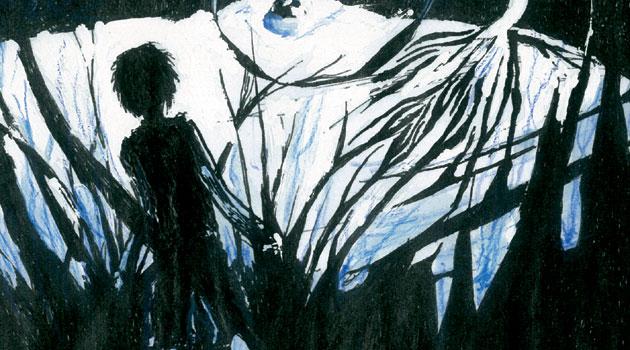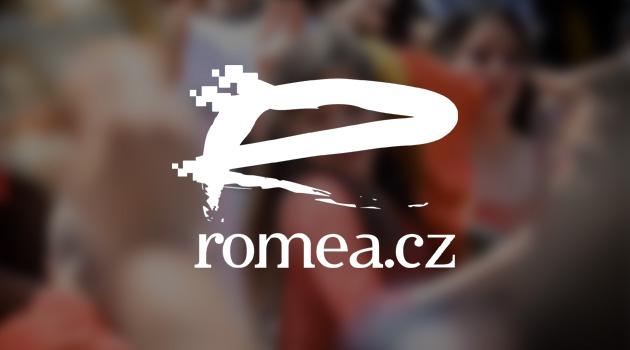Novel about the Holocaust and its Romani victims, "Jacob's Colours", now in Czech translation

Te den, cha, te maren, denaš. “If they give you food, accept it, if they beat you, get out of there.”
That is the quiet request that aids a young boy to escape and survive despite the burning pain in his heart. Jákob is just eight years old and half “Gypsy”, being one-quarter Romani and one-quarter Yenish, and he is escaping into the forest during the Second World War, since the mere color of his skin means that he must die.
In one hand the boy carries a rock and in the other a little wooden treasure-chest, the last remains of his former life of astringent fear and everything his Dad managed to teach him. He knows how to survive even when death is within reach.
Lindsay Hawdon’s book Jacob’s Colours (Czech title Jákobovy barvy) presents us with the Nazi genocide of Romani people from a microscopic perspective that has been elaborated with great sensitivity and is shot through with an unobtrusive symbolism culminating in a raw realism of deep, long-lasting resonance. The book gradually introduces us to three generations of a family whose lives the author reveals to us almost simultaneously over the course of 17 years at such a pace that the reader sometimes feels the ground slipping away beneath her feet.
The narrative oscillates between three countries – Austria, England and Switzerland – and presents the fates of Jacob’s parents, who are from absolutely different ethnic groups and layers of society, parallels from which unobtrusively make their way into the story and then eventually intersect. Through what is sometimes a literally colorful description of events and feelings (one that could even deter some readers at a certain point), the author manages to draw the readers so close to the story as to make them feel they are there.
We believe we can smell the smoke-perfumed hair of Javi, or feel what it is like to be on tenterhooks while listening to a tired Lor telling a story to her children. The author uses dialogue sparingly and it can sometimes even seem as if she is conveying information that it is exhausting to take in.
The patience with which the book was written requires a patient reader. All of the details, the very smallest that the author extraordinarily weaves among the main plot line, will suddenly make sense in the end.
All of the pieces fall into place like the bricks that one day form an entire house in front of your eyes. Even as you get a shaky glimpse of something really evil as you pass through the rooms of the house, what you witness from the ground will impact you as well.
The excellently composed and thought-through sentences, the plot, the minor detours – all of these escalate into a horrifying awakening. The book is a unique handling of the Holocaust and its Romani victims.
The author has not just made a contribution to the very important commemoration of the Nazi persecution of Romani people, but has filled in the gaps that exist in the description of all the horrors the Roma have experienced, after which many never returned to their homes. When we seek to know the past, we work with the facts and numbers that summarize the overall events, but we do not always achieve actual awareness of what really happened.
Hawdon here has presented us with a little boy and his family, individuals whom we gradually come to know until they become one of us. We feel what they do.
We feel the heaviness of the evil that is persecuting them, as well as the hopeful ray of light shining in the forest that hides Jacob in its bowels. The novel is not light reading and could hardly be expected to be, given the subject.
Hawdon has managed to very sensitively, suggestively transform this horrible past of Romani people into a literary form where the pensive message is successfully communicated down to the very last drop. The Czech translation was published by DOMINO in Ostrava, Czech Republic in 2017.
This article was first published in the print magazine Romano voďi in both Czech and Romanes (reproduced below).
Le Jakoboskere farbi
„Te den, cha, te maren, denaš.“ Cicho mangľipen, savo del e zor cikne čhavoreske te denašel het olestar sar les dukhal paš o jilo the te predživel. Načirla ochto beršeskero Jakobos – pre jepaš cikán, jekh štare koterendar Rom the aver štare koterestar Jeniš, denašel vešeha andro idejos kaj pachinel o mariben, kana ča tira cipakeri farba anel o meriben. Andre jekh vast o bar the andre aver kaštuno mochtoro, te na bisterel sar dživelas, bara daraha the savoreha, so les o dad sikhaďa. Te predživel the akor, te o meriben khelel pašal tute.
E genďi E Lindsay Hawdoneskeri Jákobovy barvy amenge sikhavel e nacisticko genocida pro Roma andre mikroskopicko perspektiva, hiňi kerďi jilestar, hin andre o simbolismos, savo pes pro agor visarel pre zoralo realismos so marel andre goďi. Prindžaras sikra sikratar trin generaciji andre jekh fameľija, e autorka amenge sikhavel lengero dživipen the o drom jekhetanes, pro koter dživipen savo džal dešefta berš, o manuš, savo kada genel, šaj našavel zoralo than tel o pindre. Bonďaľol maškar trin thema: e Rakusko, e Šviajčiarsko the e Anglicko the sikhavel sar dživenas leskeri daj the o dad, save sako perenas andre aver etnicko the manušengero jekhetaňiben. Olestar hin andro vakeriben o paraleli, save pen phanden jekhetane andre jekh than the idejos.
Predal farbasto irimen vakeriben the oda, sar pen o manuša andre leste šunen, save na musaj le manušeske, so kaja genďi genel te aven pre dzeka, džanľa e autorka le manušes te cirdel andro vakeriben avka zorales, hoj šaj duminel, hoj hino tiš andre. Hoj šaj pachinel o thuv andro bala le Javiseske, the šaj pašľon pro čačina the šaj šunen, so zuňimen Lor vakerel peskere čhavorenge. E autorka na irinel but dijalogi the šaj manušeske avel pre goďi, hoj del igen but informaciji. No e autorka irinel polokes, na siďarel, the o manuš, so genel e genďi tiš na kampel te siďarel. Bo, savore lavora, vareso ciknoro, so e autorka del andre angluňi linija, paľis sikhavel, so kamel te phenel. Savoro perel andre peste sar valki, u lendar paľis šaj dikhen calo kher. Imar džanen, hoj avela varesavi bibacht, džan jekhe kherestar andro kher andro aver, u so paľis dikhen upre tel o dachos, oda hin buter, sar užarenas. Igen mišto goďaver vakeriben pal oda, so pes ačhiľa, lavora, save na peren andro vakeriben, oda savoro paľis anel bari dar.
E genďi vakerel pal romano holokaustos avka sar aver gende na. Lakeri autorka, na ča hoj na diňa te bisterel sar o nacisti le Romen marenas la perzekucijaha, no tiš sikhaďa parne thana te pes vakerel pal aja bari bibacht, savi has le Romen, u pal savi but Roma imar na avle pale khere. Te rodas, so vareko predžiďiľa, dikhas o fakta the o numera, save pal oda hine varekaj irimen. Varekana na džanas, so pes čačes ačhiľa. E Lindsay Hawdon amenge sikhaďa cikne čhavores the leskera fameľija, manušen, save chudas te prindžarel, u paľis amen šunas sar jon korkore. Lengere dukha hine the amare. Šunas pharipen, savo anel e bibacht savi len marel, šunas tiš te hin te dikhel andro veš, kaj hino garudo o Jakobos sano koteroro vudud.
O romanos Jakobeskere farbi nane loko genďipen u te dikhas pal soste irinel, ta našťi avel. E Lindsay Hawdon irinďa e genďi pal kaja bari Romengeri bibacht, jileha the čačikanes u lakere lava maren pre manušengeri goďi the o jilo, the na den te bisterel pre kaja bibacht.
